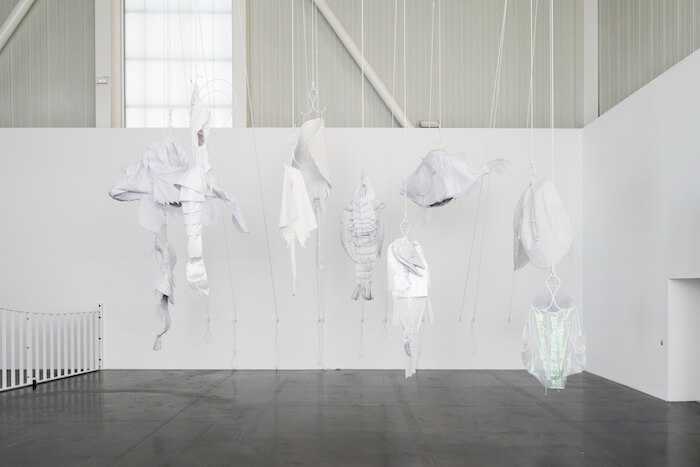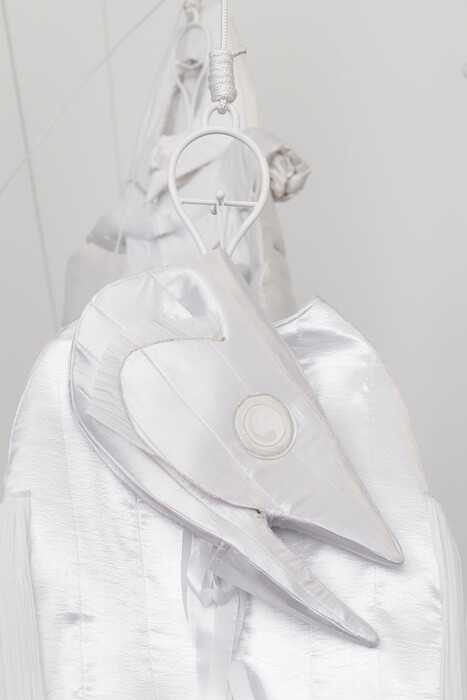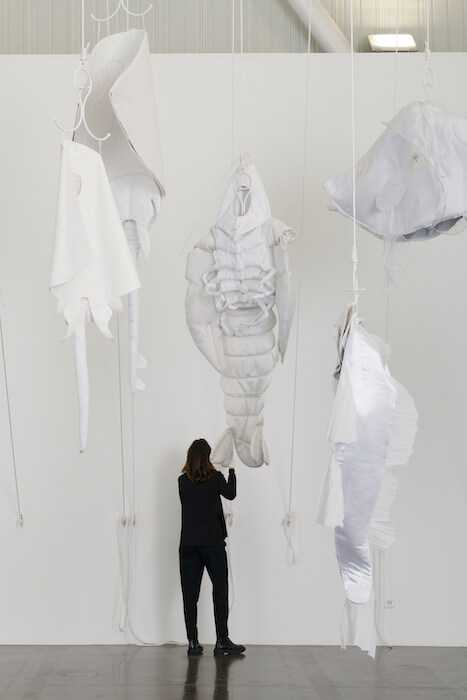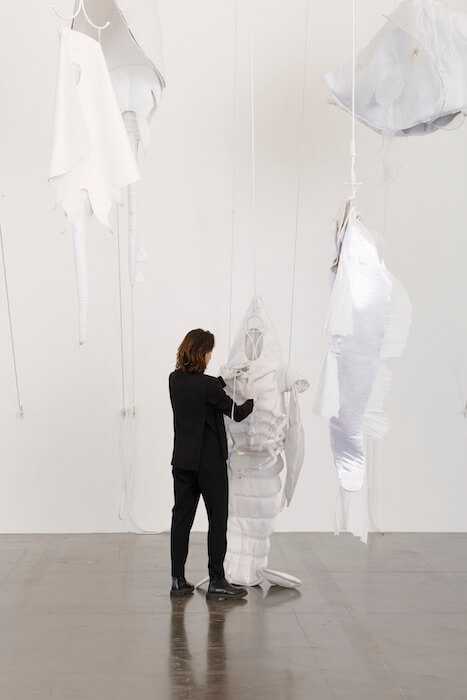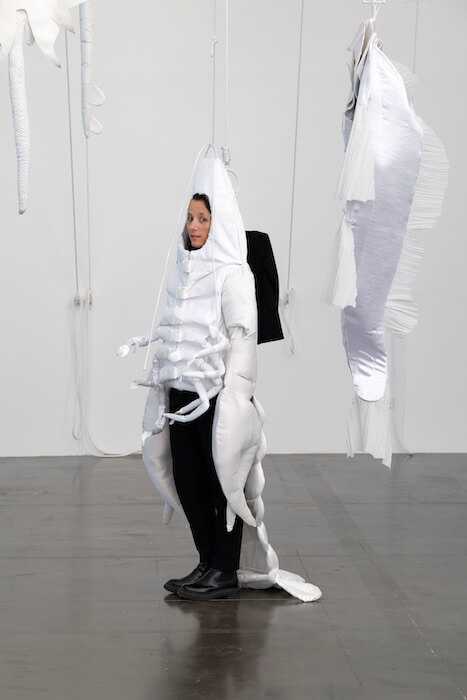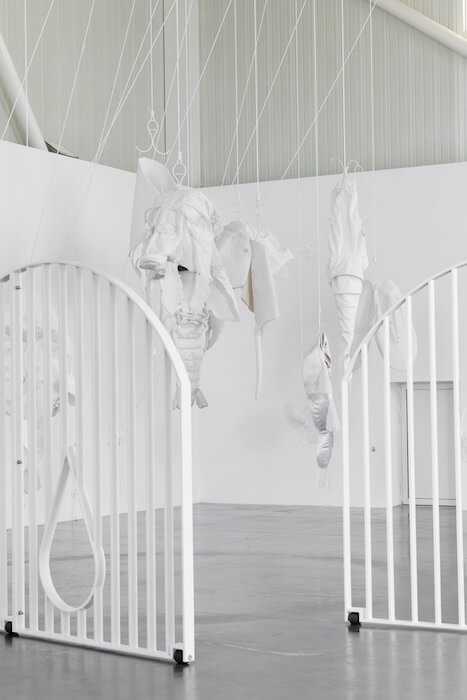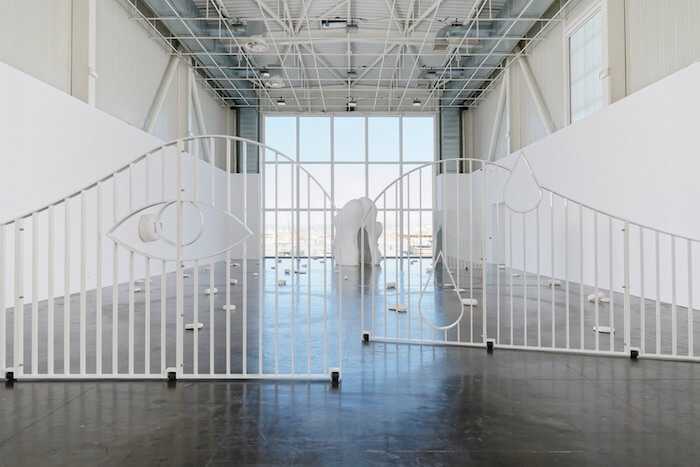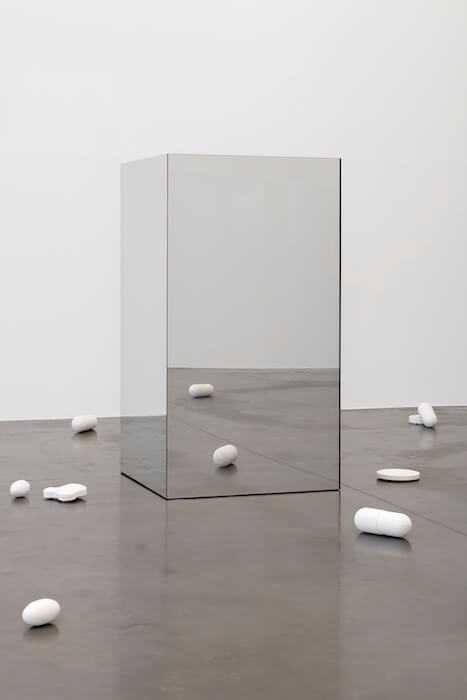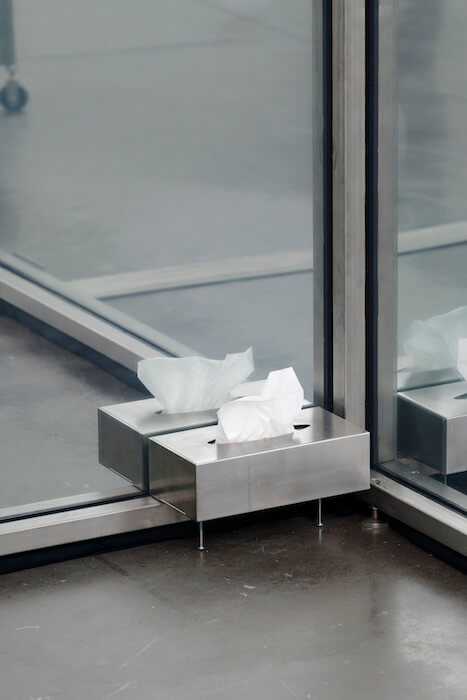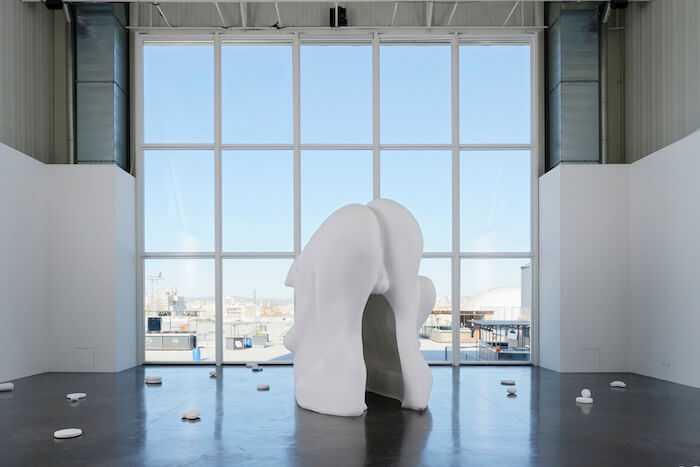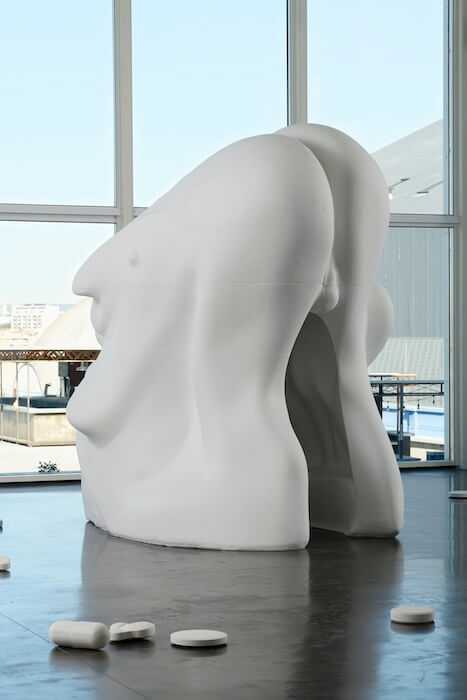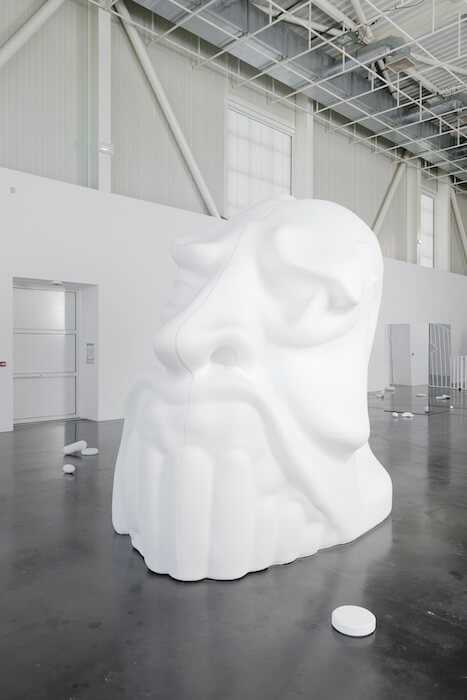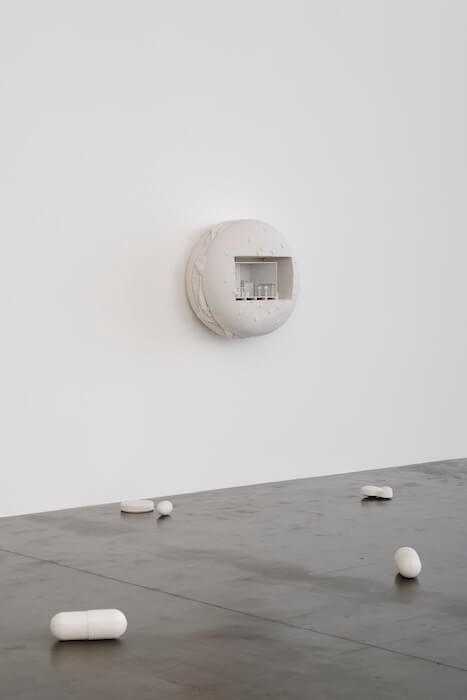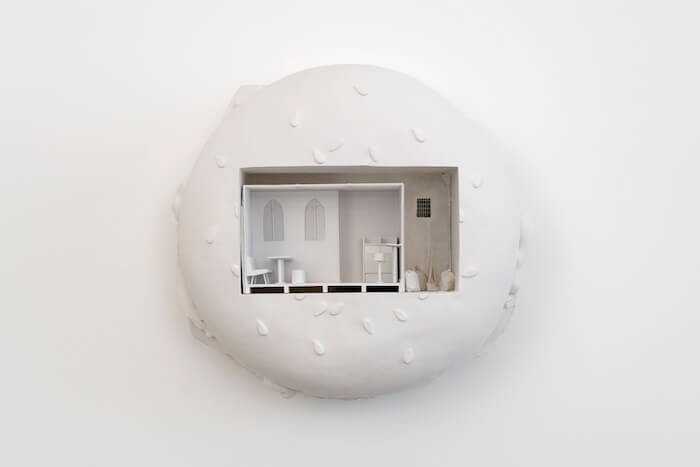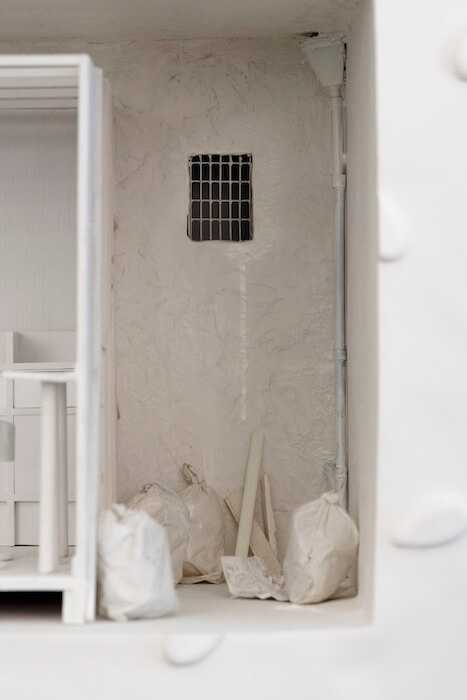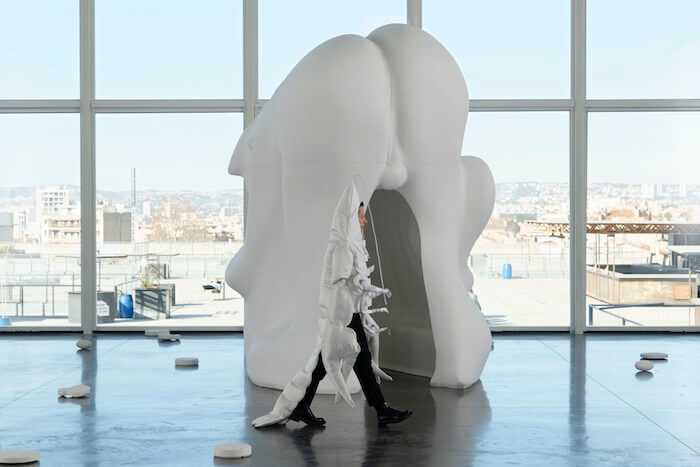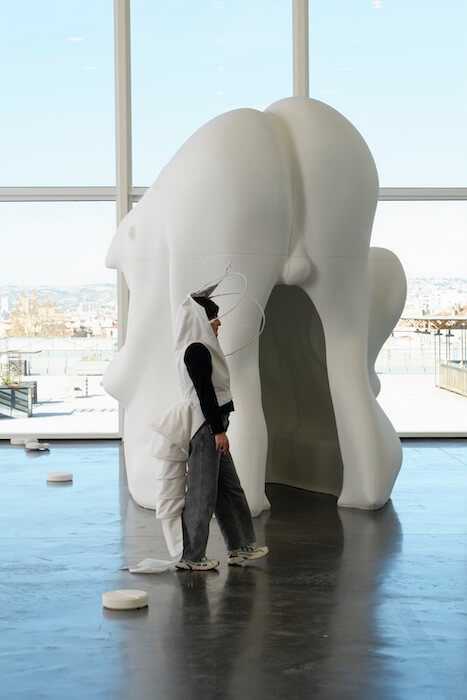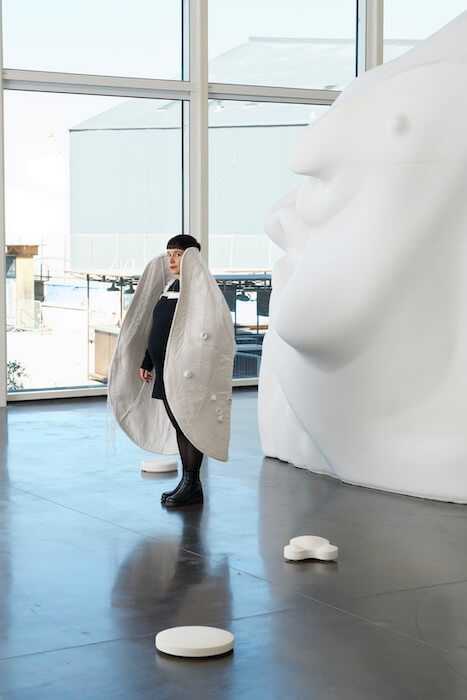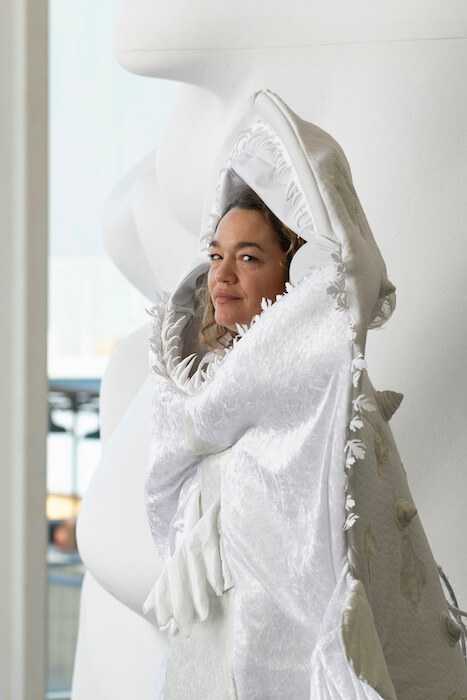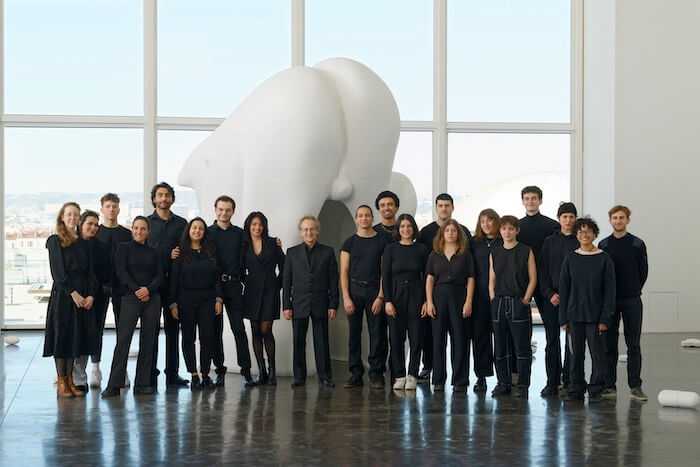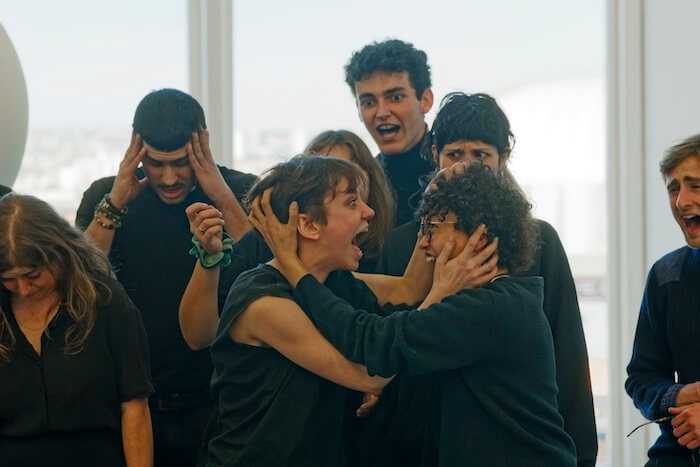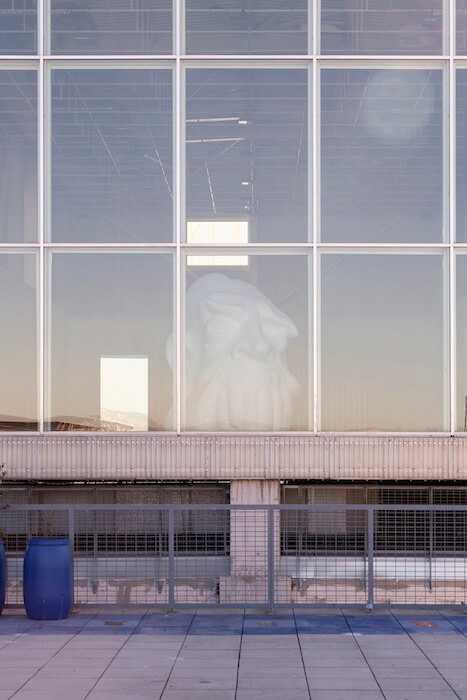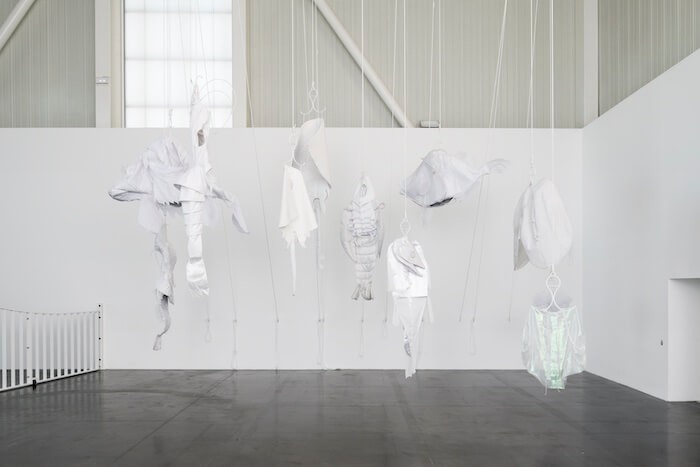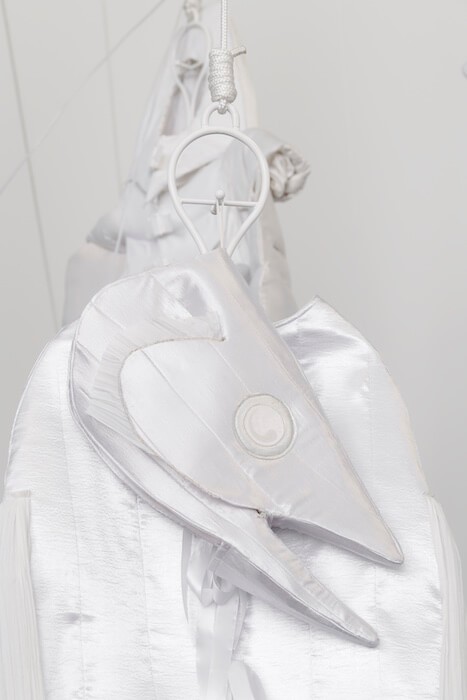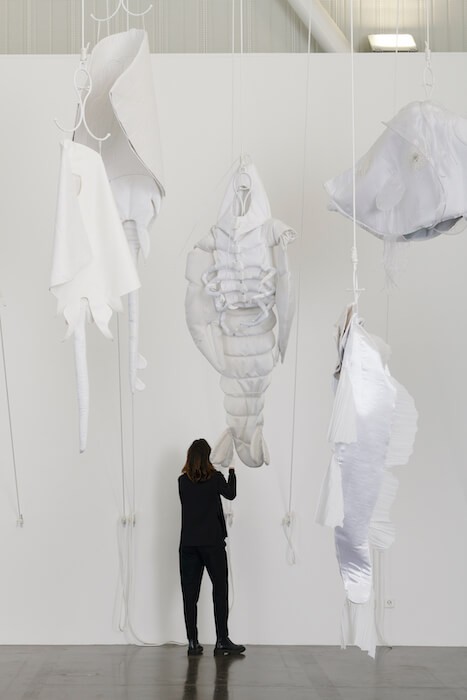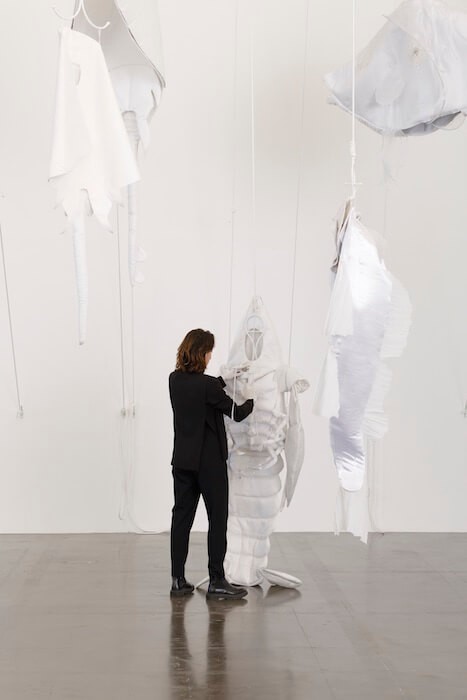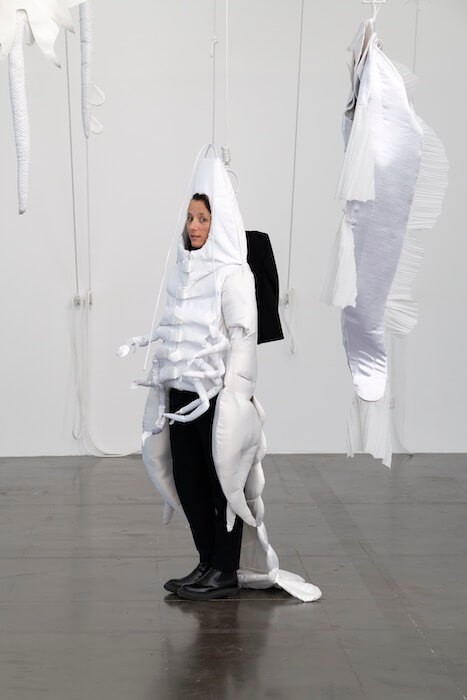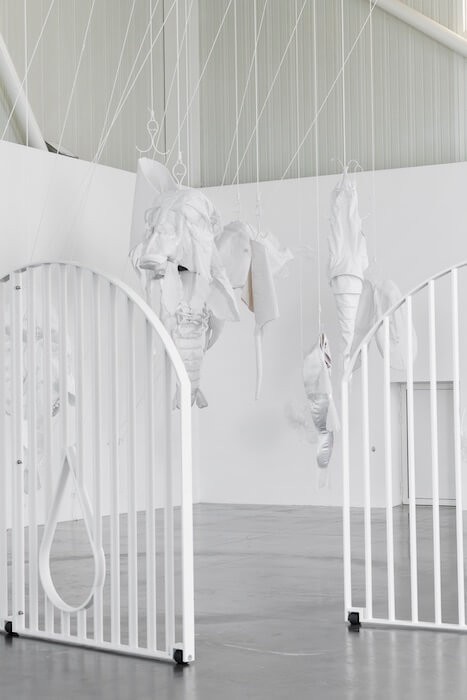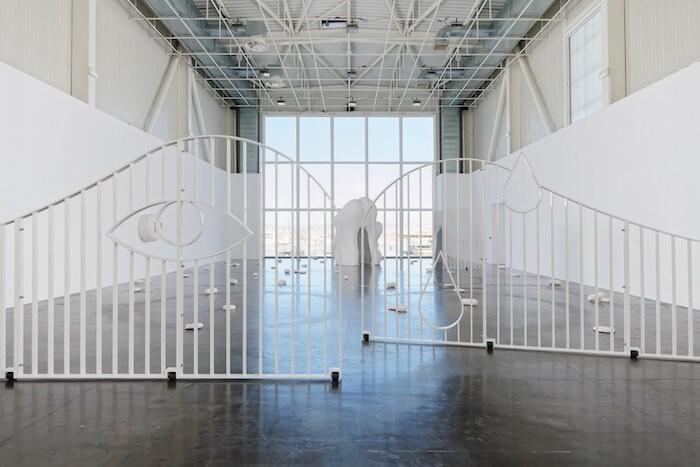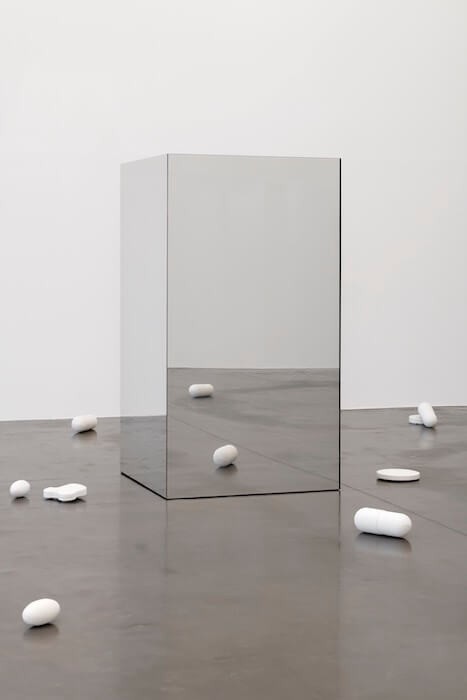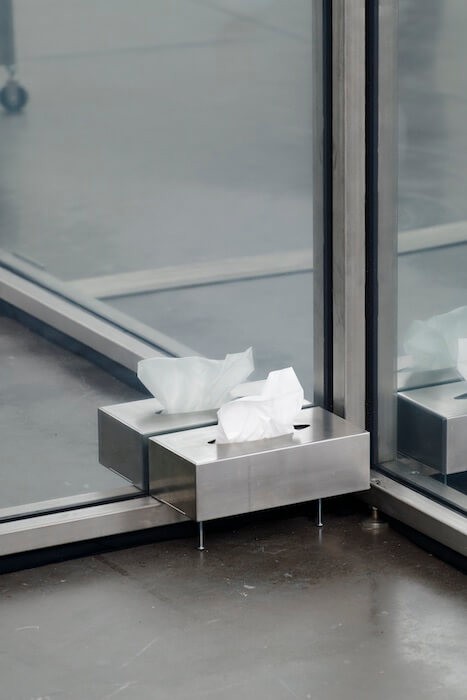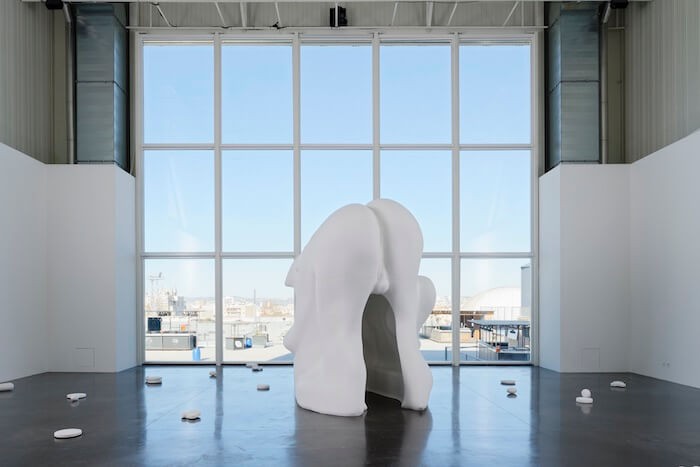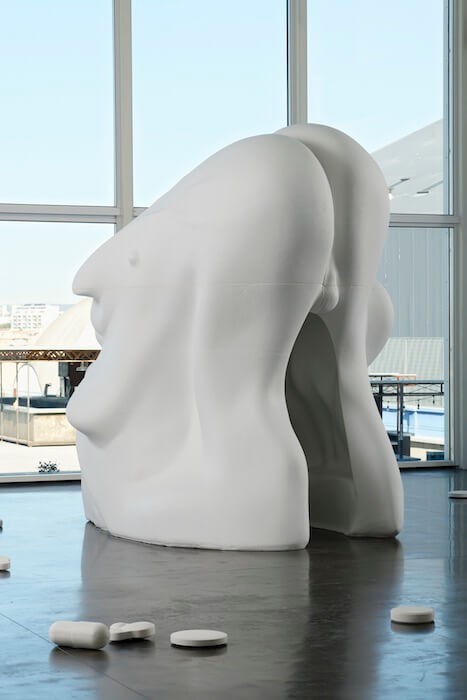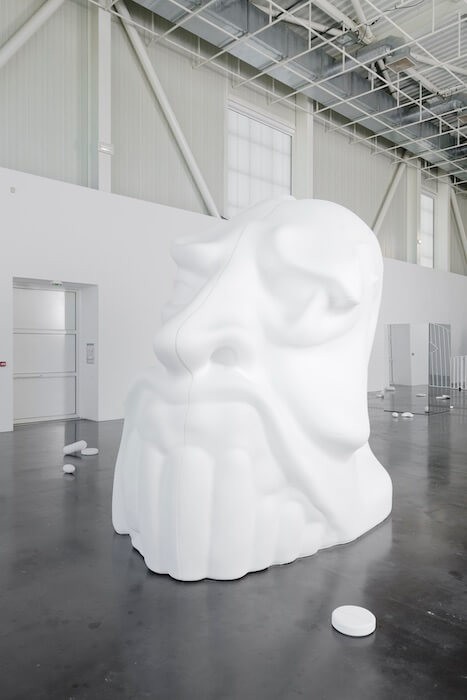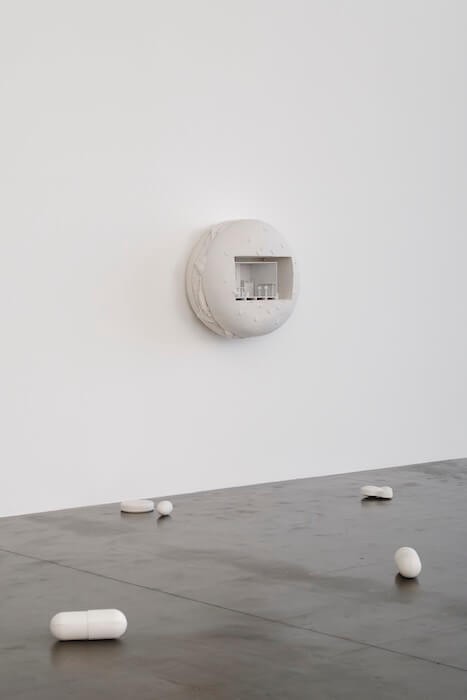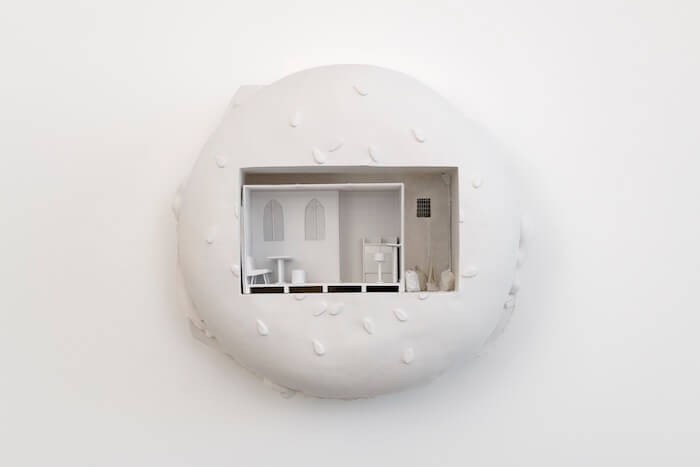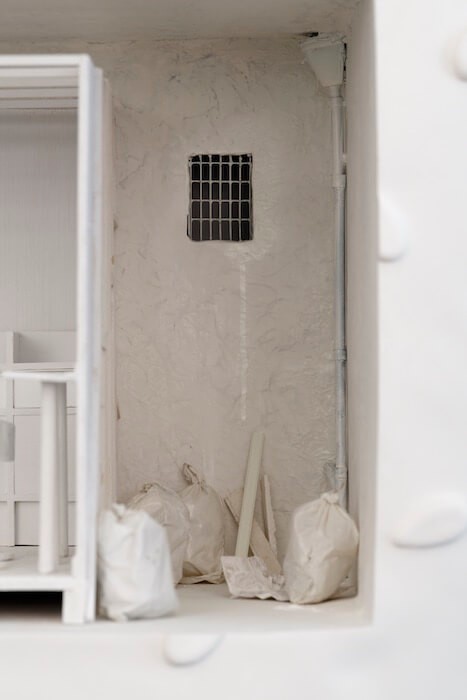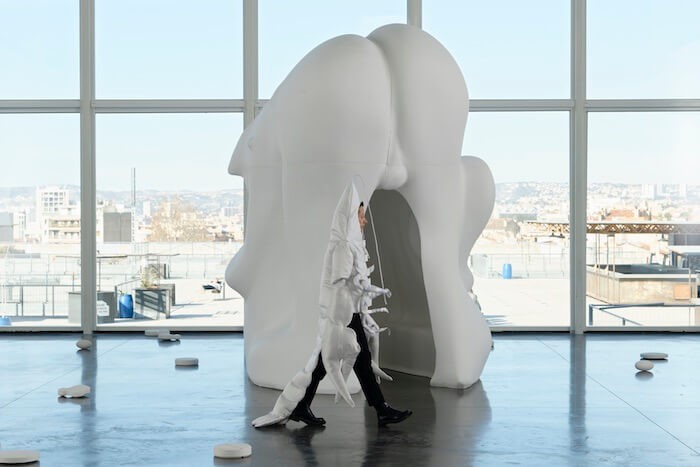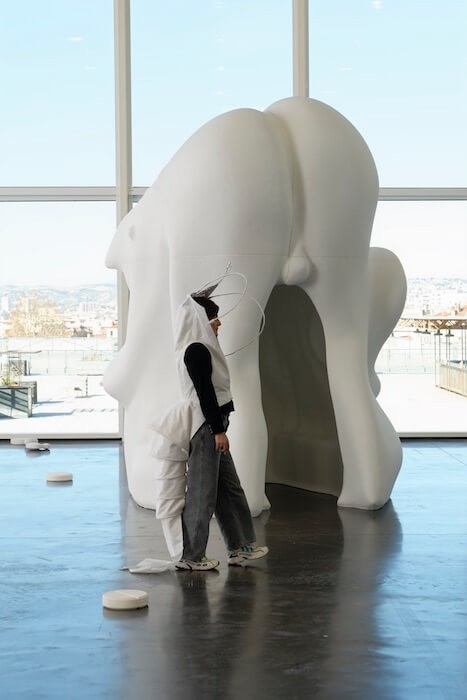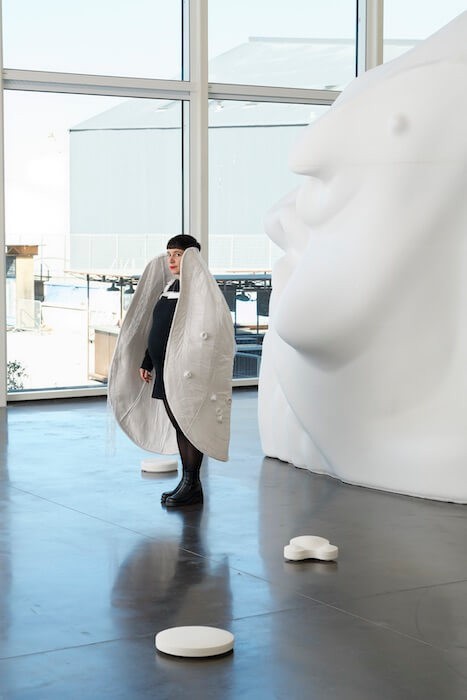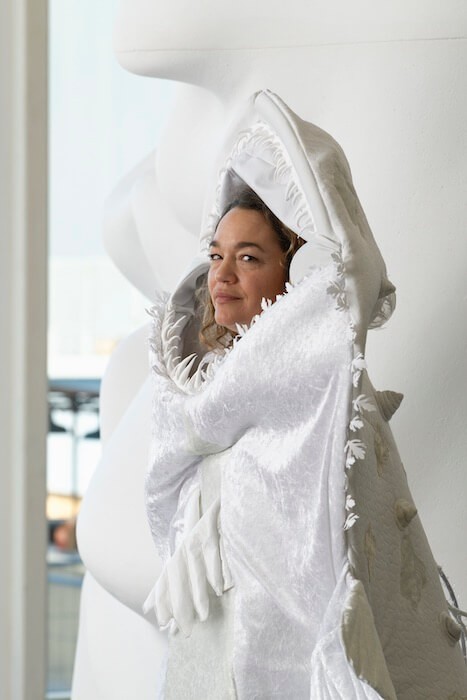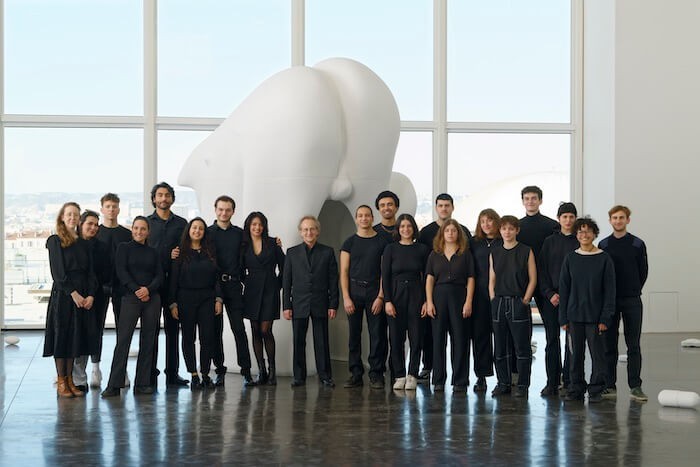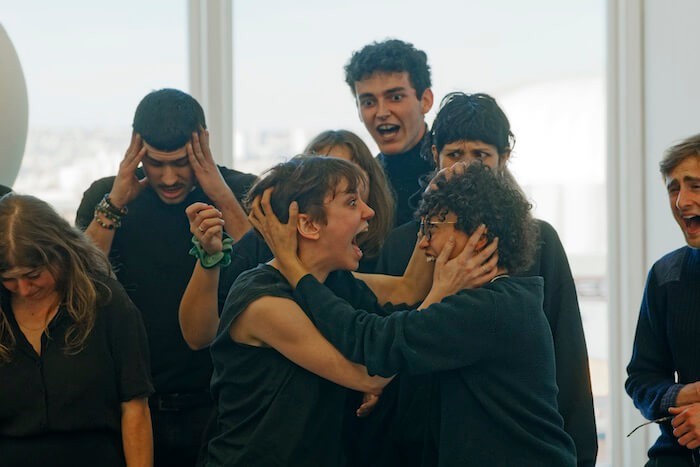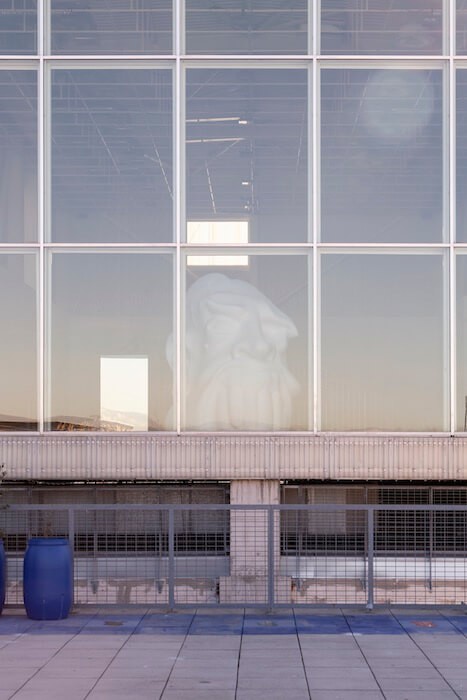The Price of the ticket
Solo show by Aline Bouvy
Curated by Victorine Grataloup, Marie de Gaulejac and Thomas Conchou
February 3 - June 2, 2024, extended until September 1, 2024, to public opening on February 2, from 5 to 10 pm
Wed-Fri: 2-7pm, Sat-Sun: 1-7pm
Panorama, Friche la Belle de Mai, 41 rue Jobin, 13003 Marseille, France
⮕ Click here to read the exhibition’s guide
An exhibition co-conceived and co-produced by Triangle-Astérides and La Ferme du Buisson, Centers for Contemporary Art of National Interest.
In coproduction with Friche la Belle de Mai and in partnership with Kultur | Lx, the Ministry of Culture of the Grand Duchy of Luxembourg, GMEM - centre national de création musicale, Conservatoire Pierre Barbizet - INSEAMM and Bi-pole
A tall gate, rimmed to resemble a lip, adorned with an eye and tears, blocks the entrance of the exhibition space. On one side: costumes hang from the ceiling, depicting spectral underwater fauna. On the other, for those who can get in: a monumental sculpture—half grimacing face, half open legs from which strange cries escape—and a one-way mirror booth face each other in the middle of a pathway littered with large tokens. From the walls to the works, everything is white. “A white that is almost too white”, in the words of artist Aline Bouvy.
Although the exhibition depicts a theatrical landscape, which seems to invite the audience to play an active role in a disturbing immersive play, the terms of which they do not completely grasp, it is not the stage area that Aline Bouvy is playing with, but the equally codified space of amusement and theme parks.
In France, theme parks sprung up in the 1980s, but they are the successors of traditional funfairs as well as universal and colonial exhibitions (two of which took place in Marseille, in 1906 and 1922), which originated in the nineteenth century. The Panorama exhibition space, inaugurated for the Marseille European Capital of Culture in 2013, is a distant relative: “Its immense bay window functions like a panopticon; the elevated viewpoint over the city conveys a feeling of grandeur and power, like in a control tower in which you become the distanced observer of the world before you.”
The title of the exhibition, The Price of the Ticket, plays on the double meaning of the word price: it refers both to what the public must pay materially to enter an amusement park, to pass through the gates, but also what it costs symbolically, what must be sacrificed. The monochromatic nature of the works also invites a shift in meaning: from white (blancheur) to whiteness (blanchité), implying in both cases an alleged neutrality, a certain ordering of the world—a cruel white fiction.
Born in Belgium in 1974, she lives and works between Belgium and Luxembourg. Aline Bouvy explores a wide range of mediums, including sculpture, drawing, photography, and sound. Between 2000 and 2013, the artist worked in collaboration with John Gillis and also cofounded the feminist collective The After Lucy Experiment with Claudia Radulescu, Delphine Deguislage, Charlotte Beaudry, Céline Gillain, and Aurélie Gravas (from 2010 to 2015). […] She examines our relationship to the body and to space, inviting us to new sensory experiences that are simultaneously seductive and repulsive. Here, the body becomes a medium. Between desire and empathy, shapes and languages are revealed where it is difficult to conjure up an image or a word.
While the works contain a strong sensory charge related to identity and taboos, the history of bodies, both male and female, is […] evoked in its latent and sexual, domestic, intimate, and political connections. […]
By revisiting the slow utopian trajectory of a culture in the process of turning away from the dominant patriarchal and heteronormative models, the libido, freed from all morality, without judgement, deposes those bodies exemplifying the authority of a society that monitors and confines our bodies. By exposing the world under surveillance, she hijacks the aesthetic and political codes of power and domination, destabilizing our reference points. […]
Biography by curator Marianne Derrien.
